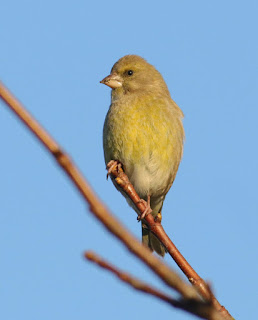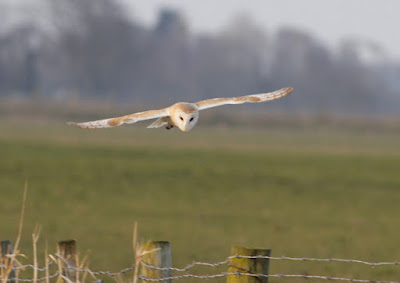The Pink-footed Geese - “pinks”, “pinkies” or simply “geese” to us locals are in huge numbers this week, perhaps up to 20,000. I think there's been an influx from South Lancashire and Norfolk with many beginning their leisurely journey back to Iceland via Scotland in time for the breeding season. They will not be the first on territory though as following a whole series of mild winters, some say global warming, many pinkies now spend the winter in Iceland and so save themselves the danger and energy requirements of a 2,000 mile round trip to the UK.
Usually the geese stick to the flat-as-a-pancake fields of Cockerham/Pilling/Stalmine area and don’t often venture even the few miles north to the pastures of Thurham. Here Lower Thurnham stays at sea level but Higher Thurnham can rise to the dizzy height of 50 metres above.
"Click the pics" for a chance to count the silent pinkies. Sorry there's no soundtrack.
"Click the pics" for a chance to count the silent pinkies. Sorry there's no soundtrack.
Looking down from the A588 onto the partly flooded fields gave a new perspective to the challenge of counting geese when each and every field held hundreds, sometimes thousands of our pink-footed friends. And then towards the coast just half-a-mile away were something like 500 wild swans, a mix of Whooper Swans and ten or twelve Bewick’s Swan.
Pink-footed Geese at Thurham
Pink-footed Geese
"Pinkies" at Thurnham
Pink-footed Geese
Pink-footed Goose
Wild swans at Thurnham
Whooper Swans
Geese at Higher Thurnham
Down to Cockersands the fields swarmed with both Lapwings and Golden Plovers, impossible to count with accuracy but certainly numbering in the early thousands of each.
There was nothing much doing at the caravan site except for a number of Greenfinch, Goldfinch and Tree Sparrow although a Chiffchaff at the entrance gate was a pleasant surprise.
Greenfinch
Conder Green proved quiet birding with a reduction to 95 Teal, 18 Redshank, 2 Little Grebe,2 Wigeon 1 Little Egret and 1 Spotted Redshank. Noticeable were the three pairs of Oystercatchers and now clearly on territory in three distinct locations across the pool and islands.
I travelled back via Gulf Lane where there are still 170 wintering Linnet. Also here - 8 Stock Dove ,1 Little Egret, 1 Kestrel and 1 Reed Bunting.
I drove back home via Pilling/Rawcliffe and Stalmine mosses where I saw 4 Buzzards and then 2 Kestrels and also caught up with 20 or so Corn Buntings in the usual spot. Maybe it’s not just geese on the move as I found 3 separate flocks of Fieldfares totalling 425 individuals but managed to see just a single Redwing. At one tiny flood were 8 Pied Wagtails.
Fieldfare
The weekend weather forecast looks dire to say the least but with luck I will be out there birding. Stay tuned to see what turns up on Another Bird Blog.
Linking today to Anni's Birding and Eileen's Saturday.
Linking today to Anni's Birding and Eileen's Saturday.
















































































